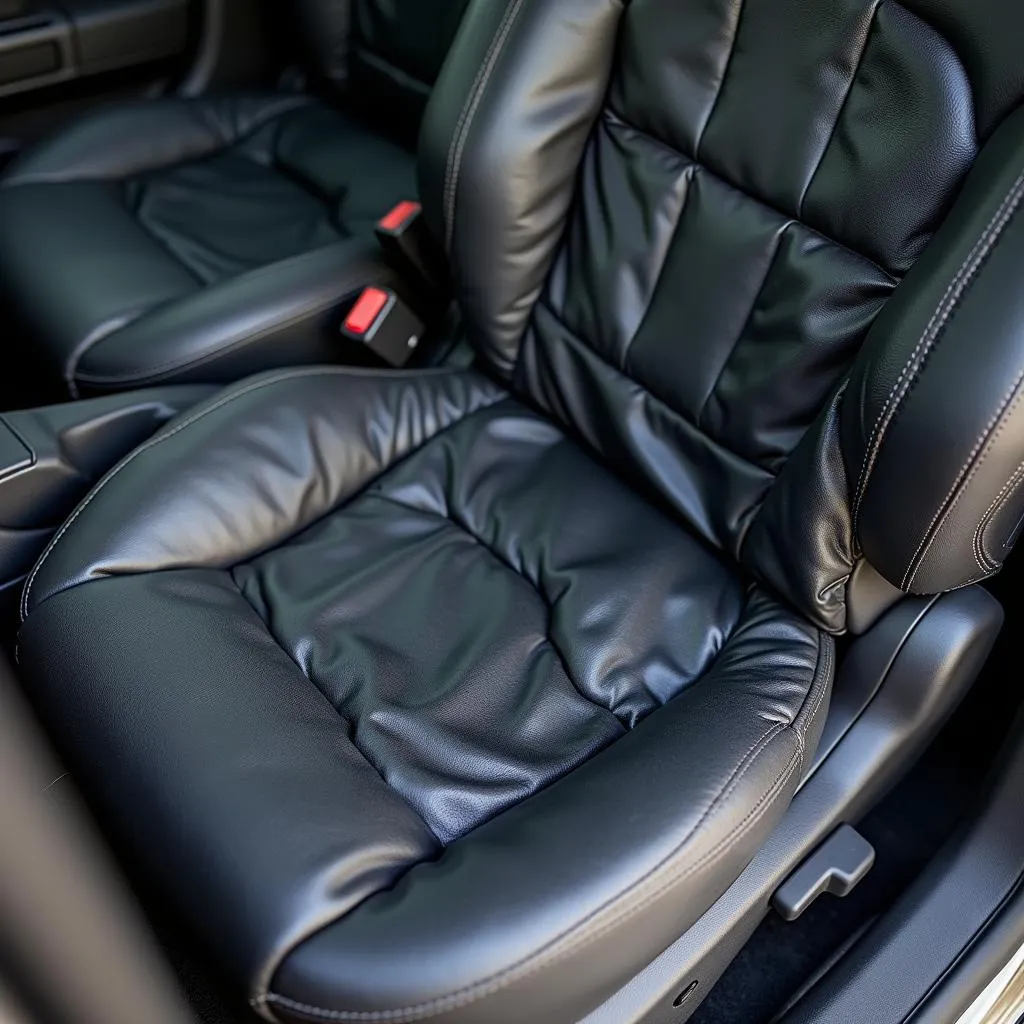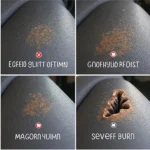You slide into your VW Golf, eager to hit the road, but something’s not right. Your once-comfortable leather seat now resembles a deflated balloon. A collapsed car seat is not only unsightly but also uncomfortable and potentially unsafe. Before you resign yourself to an expensive replacement, let’s explore whether that collapsed leather car seat in your VW Golf can be repaired.
Understanding Why VW Golf Leather Car Seats Collapse
To tackle the issue, it’s essential to understand the root of the problem. Several factors contribute to collapsed leather car seats:
- Worn-out Foam: The most common culprit is the foam padding beneath the leather upholstery. Over time, this foam can degrade, lose its resilience, and crumble, causing the seat to sag and lose its shape.
- Broken Support Structure: The metal frame and springs underneath the foam provide crucial support. If these components become damaged or broken, the seat can collapse unevenly, resulting in an uncomfortable and unstable seating surface.
- Loose or Damaged Hog Rings: Hog rings are used to secure the seat cover and foam to the frame. If these rings become loose or break, the seat cover can sag, contributing to a collapsed appearance.
Repairing Your VW Golf’s Collapsed Leather Seat: Is it Possible?
The good news is that in many cases, a collapsed VW Golf leather car seat can be repaired, saving you the significant expense of a full replacement. Here’s a breakdown of common repair options:
1. Foam Replacement
If the foam is the primary issue, a skilled upholstery shop can replace it. This process typically involves:
- Removing the seat from the vehicle.
- Carefully detaching the leather cover.
- Replacing the old foam with new, high-density foam cut to the exact specifications of your VW Golf’s seat.
- Reattaching the leather cover, ensuring a smooth and taut fit.
2. Repairing or Replacing the Support Structure
If the seat frame or springs are damaged, a qualified technician can:
- Repair any bent or broken metal components.
- Replace severely damaged parts with new ones.
- Ensure the entire support structure is stable and properly aligned.
3. Addressing Loose or Broken Hog Rings
Loose or broken hog rings can be easily replaced. A technician will:
- Remove the existing, damaged hog rings.
- Install new hog rings to securely fasten the seat cover and foam to the frame.
When is a Seat Replacement Necessary?
While repair is often possible, there are instances where a complete seat replacement might be the more practical solution:
- Severe Damage to the Leather: If the leather is ripped, torn, or excessively worn beyond repair, replacement might be necessary.
- Safety Concerns: Significant damage to the seat structure can compromise safety, requiring a new seat.
- Cost Considerations: In some cases, the cost of extensive repairs might be close to or exceed the price of a replacement seat, particularly for older VW Golf models.
Finding a Qualified Repair Shop
Choosing the right repair shop is crucial for a successful outcome.
- Look for Experience: Seek out shops specializing in automotive upholstery and seat repair.
- Check Reviews: Online reviews and testimonials provide insights into the quality of work and customer satisfaction.
- Request Quotes: Get quotes from multiple shops to compare pricing and services offered.
Extending the Life of Your VW Golf’s Leather Seats
Prevention is always better than cure. Here’s how to prevent premature wear and tear:
- Regular Cleaning: Clean your leather seats regularly using a leather cleaner and conditioner.
- UV Protection: Park your car in the shade or use a sunshade to prevent UV damage and fading.
- Distribute Weight Evenly: Avoid placing heavy objects on your seats for extended periods.
- Address Issues Promptly: Don’t ignore early signs of wear and tear.
Conclusion
A collapsed leather car seat in your VW Golf doesn’t have to be a reason for despair. In many cases, skilled technicians can restore your seats to their former glory, ensuring your comfort and preserving the aesthetic appeal of your vehicle’s interior. Remember, early detection and addressing issues promptly are key to maximizing the lifespan of your leather car seats.
FAQ
1. How much does it cost to repair a collapsed leather car seat?
The cost varies depending on the extent of the damage, the materials used, and the labor rates in your area.
2. Can I repair a collapsed leather car seat myself?
Car seat repair requires specialized tools and expertise. It’s generally recommended to entrust the task to professionals.
3. How long do car seat repairs typically take?
The time frame can vary, but simple repairs might be completed within a day or two, while more extensive repairs could take longer.
4. Will repairing my car seat void my VW warranty?
Repairs performed by qualified professionals should not affect your warranty.
5. How often should I have my leather car seats professionally cleaned?
Professional cleaning every 12 to 18 months is recommended to maintain their condition.
Explore More Car Repair Tips and Advice
For more information on car maintenance, repairs, and expert advice, visit CarRepairOnline. We offer a wealth of resources to keep your vehicle running smoothly.
Need help with your collapsed VW Golf leather car seat? Contact us today via WhatsApp: +1(641)206-8880, Email: [email protected]. Our 24/7 customer support team is here to assist you.


